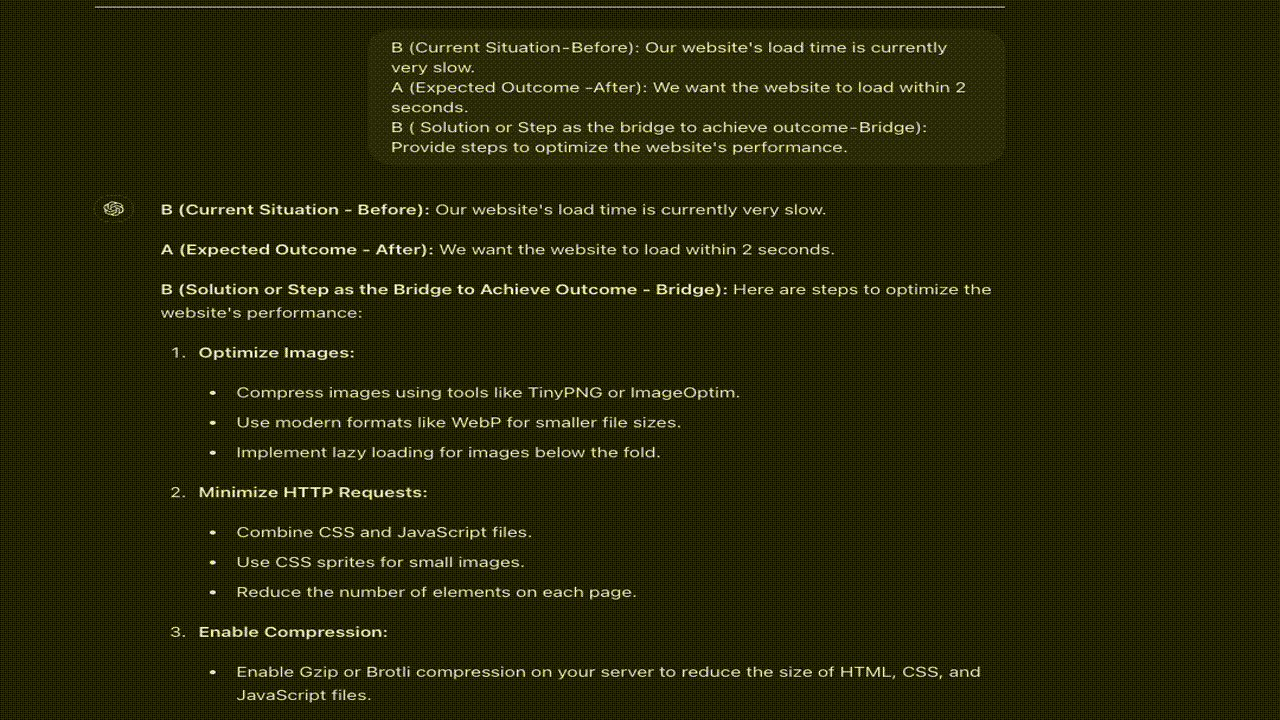AI Whisperer’s Toolkit: Mastering 5 Essential Prompt Techniques
Unlock the full potential of ChatGPT with 5 essential prompt techniques. Learn how clarity, structure, and precision in your queries can improve response quality, ensure consistency, and help you get more useful, tailored answers—perfect for business or technical use
By Chiong Chien Goh,
We’ve never fully maximized the usage of ChatGPT to its fullest potential. With some prompting frameworks can significantly enhance its utility.
Why are they important?
- Clarity and Structure: The following frameworks are used to define specific and clear approaches to convey your question or what you want the AI to do for you and to get AI to formulate more helpful and suitable responses.
- Precision in Communication: When a message is well defined and accurate, it helps avoid ambiguity and misinterpretation, which in turn will increase the likelihood of giving better and more satisfactory answers.
- Improved Response Quality: When you use a prompting framework, you’re effectively guiding the AI model to understand the context and requirements of your query. This can lead to more thoughtful and comprehensive responses that address your specific needs.
- Consistency: Frameworks help maintain consistency in the messages that are being passed especially in business or technical related fields. It enhances the preparation of request compliance in a standard format which makes it easier to monitor the variation of the responses over time.
To illustrate how it works, I will provide an example for each framework:
- RTF framework helps in creating a clear context, defining responsibilities, and ensuring the output meets specific formatting requirements.
- R: Define a Role — This is about defining the person or thing that an AI acts like
- T: Assign a Task — Clearly state what has got to be done.
- F: Set the Format — Determine how the response should be structured or presented.


2. TAG is an approach based on clarity on tasks, actions, and goals to be achieved among its principles.
- T: Define a Task — Clearly state what needs to be accomplished.
- A: State an Action — Specify the steps or actions to be taken.
- G: Set the Goal — Outline the desired outcome or objective.


3. BAB (Before, After, Bridge) method is effective for use with problem solving and strategic planning questions.
- B: Current Situation (Before) — Describe the starting point or current state.
- A: Expected Outcome (After) — Define the desired end result.
- B: Solution or Steps (Bridge) — Outline the process to move from the current state to the desired outcome.


4. CARE guarantees a broad prompt by addressing context, action, wanted outcomes and expectations.
- C: Give the Context — Provide background information or situational details.
- A: State an Action — Specify what needs to be done.
- R: Clarify your Result — Define what you want to achieve.
- E: Give the Expectations — Explain any specific requirements or standards.


5. RISE (Role, Input, Steps, Expectations), is particularly useful for tasks that require a structured, step-by-step approach within a specific context or role.
- R: Set a Role — Define who or what the AI should act as.
- I: Provide the Input — Give necessary information or data.
- S: Ask For Steps — Request a step-by-step approach or process.
- E: Clarify your Expectations — Explain what you expect from the output.


There are a number of prompting frameworks available and one has to select the most suitable one. You can also develop your own framework as long as it gives out adequate information concerning the chatbot.
Remember to double-check the answers you get from ChatGPT (or any GenAI chatbot)!
It is important to confirm if answers from any AI chatbots are accurate or reliable.
1. Avoid Misinformation:
- This will guarantee that what is being shared with people is proven and correct, thereby avoiding the instances of sharing false or misleading information.
2. Maintain Credibility:
- Verification of information earns trust for the presenter and the institution he represents by raising its credibility among the audience.
3. Ensure Quality Decisions:
- In professional as well as educational settings, reliable information helps them make good decisions which are informed ones.
4. Mitigate Risks:
- Untrue data might lead to actions that have serious repercussions in terms of risk exposure hence reducing such potential risks.
5. Promote Responsible Use of AI:
- Responsible utilization of AI tools emphasizes on human oversight and critical assessment while still relying on AI systems for a better outcome
Summary
The full potential of ChatGPT is all about how to prompt it strategically. Such frameworks as RTF, TAG, BAB, CARE and RISE bring clarity precision and structure into your engagements with AI leading to better and predictable articulations.
The outputs generated may be made more relevant and good quality through providing specific contexts within which the AI can be guided to operate with clear expectations of what it should produce. Also, confirming information produced could help in ensuring correctness of the AI generated texts thus keeping its trustworthiness intact as well as enhancing responsible use of artificial intelligence technologies. These are some guidelines for you to follow so that you could get maximum efficiency from ChatGPT and have a better communication process that is worth believing in.

